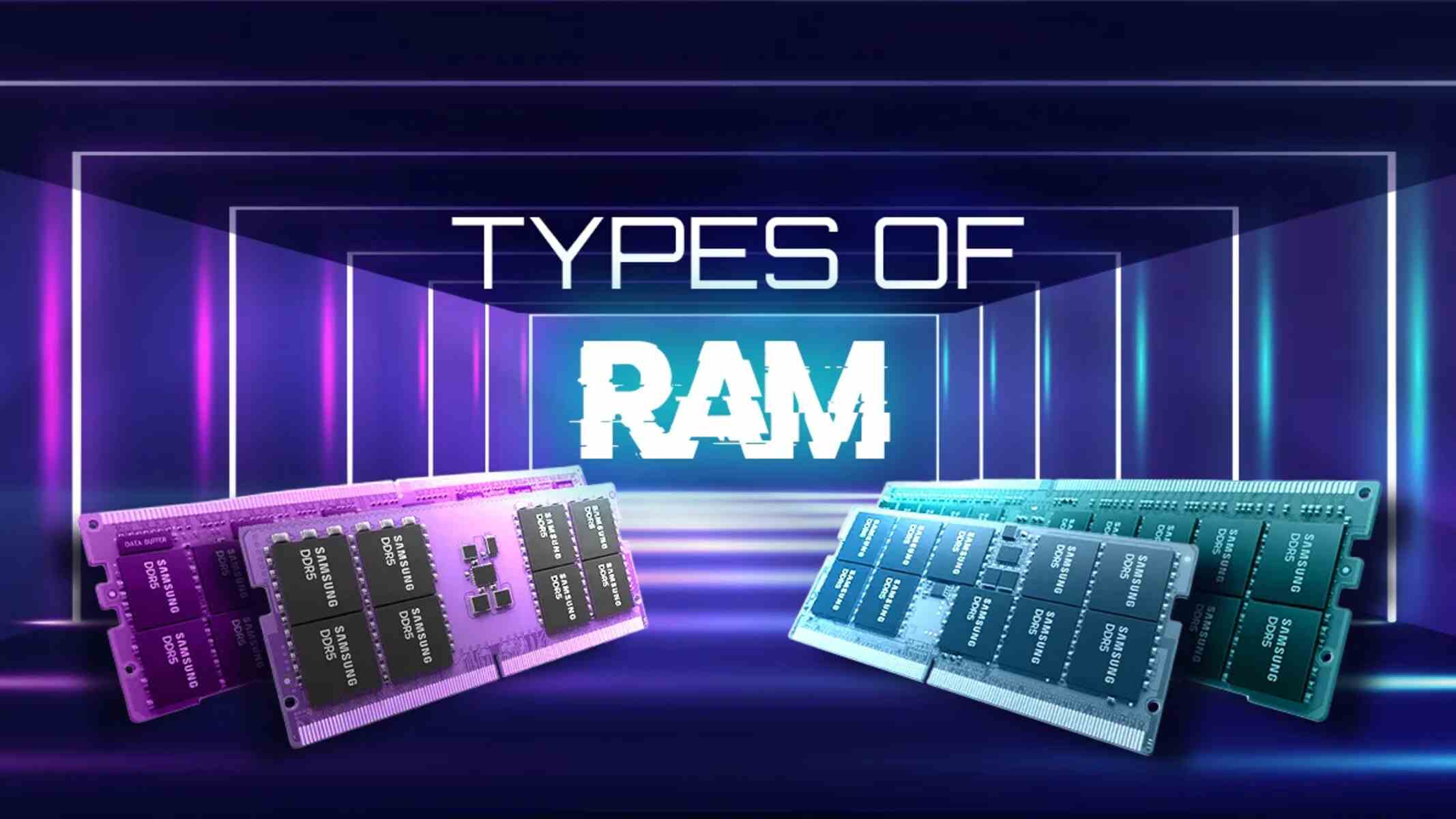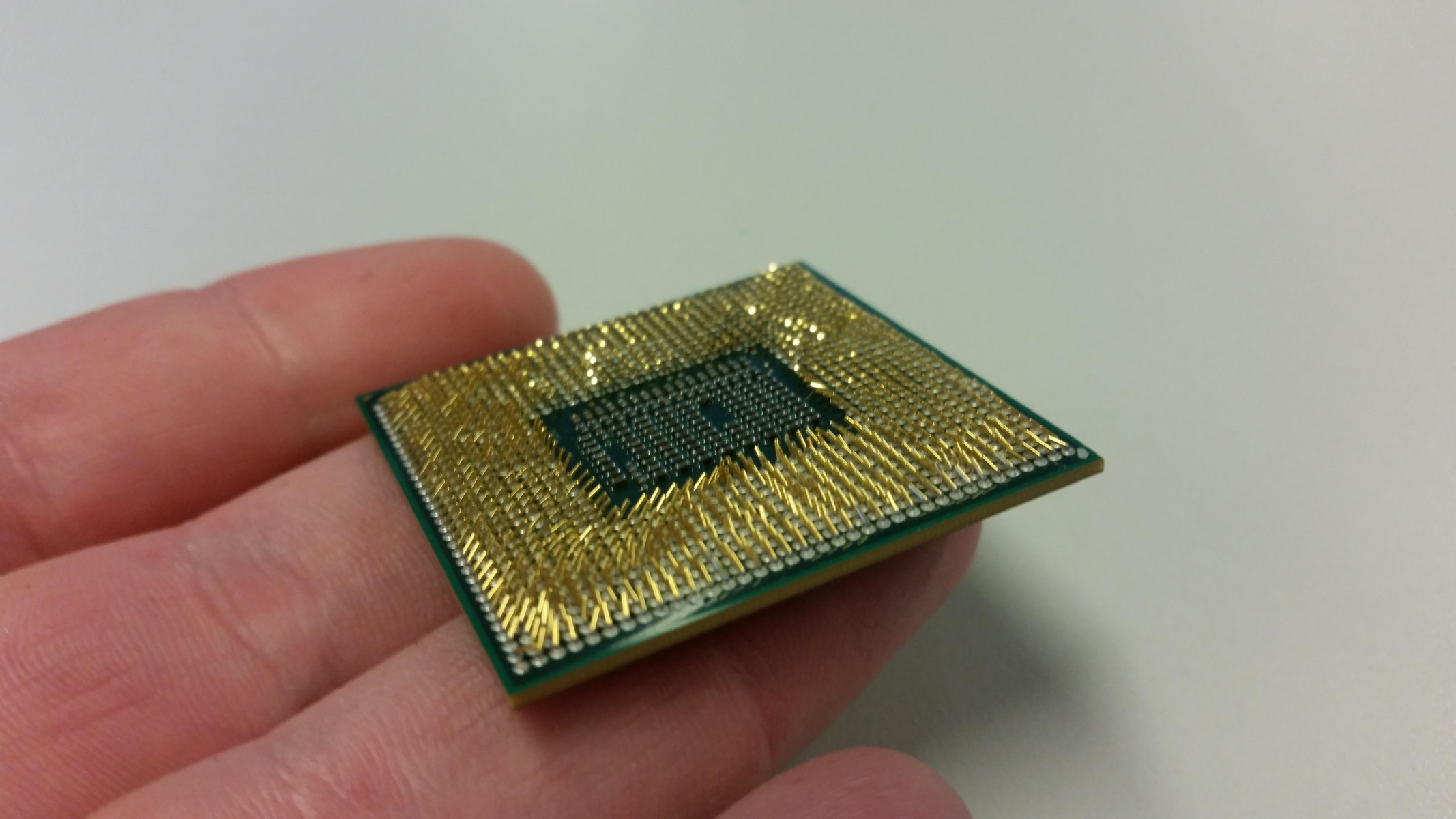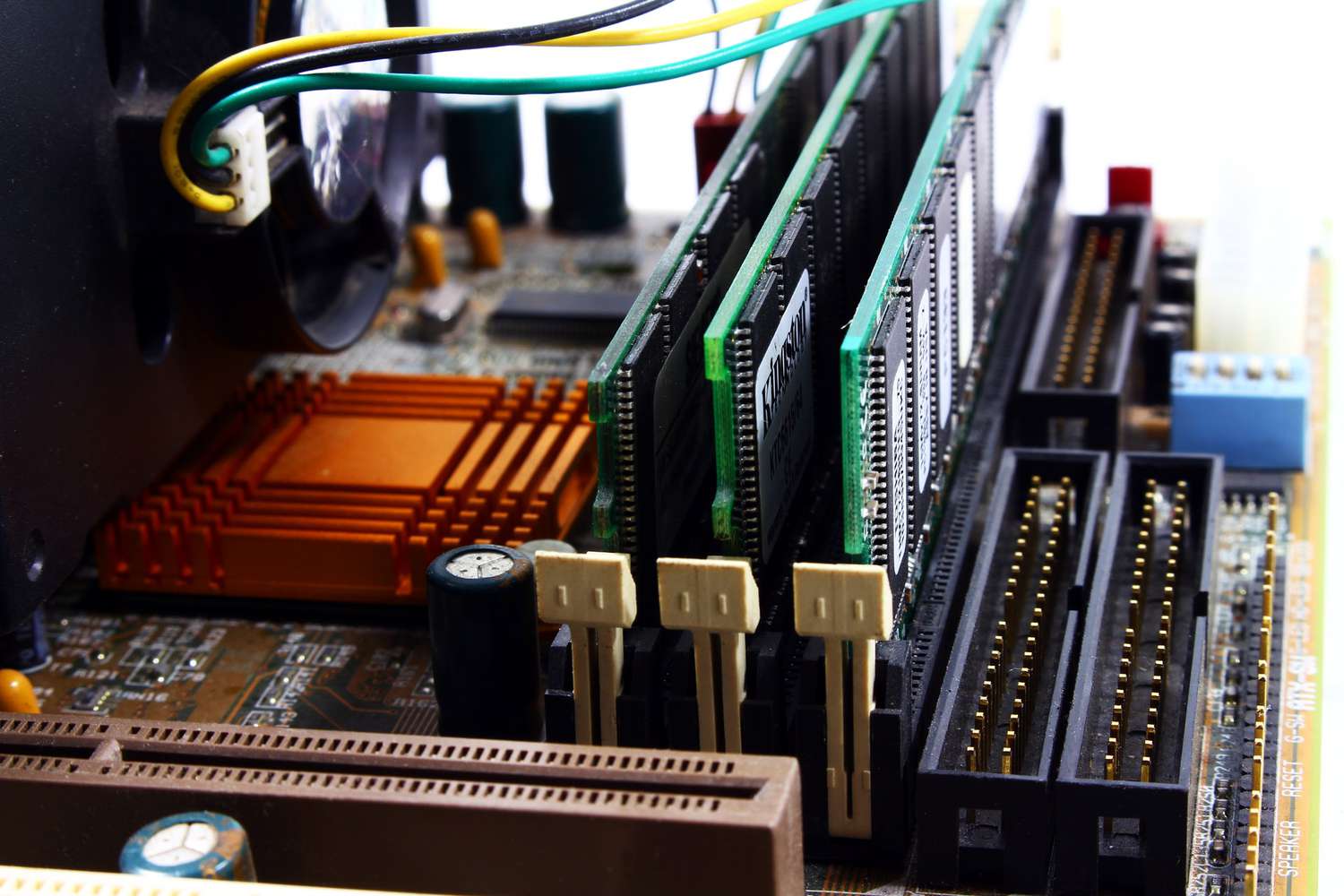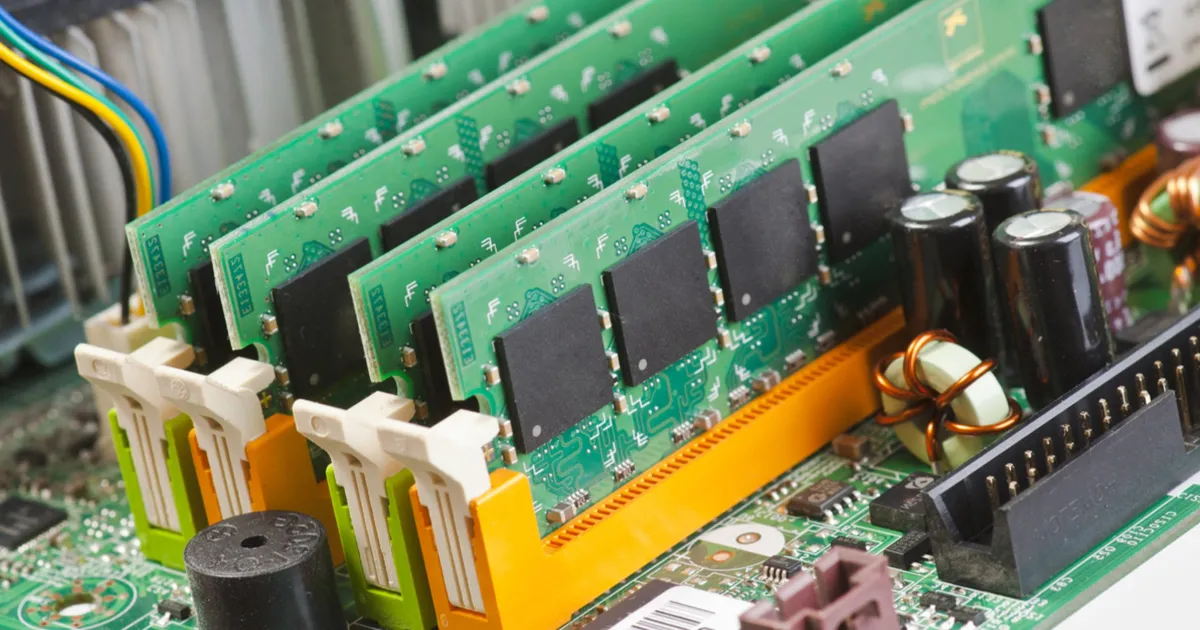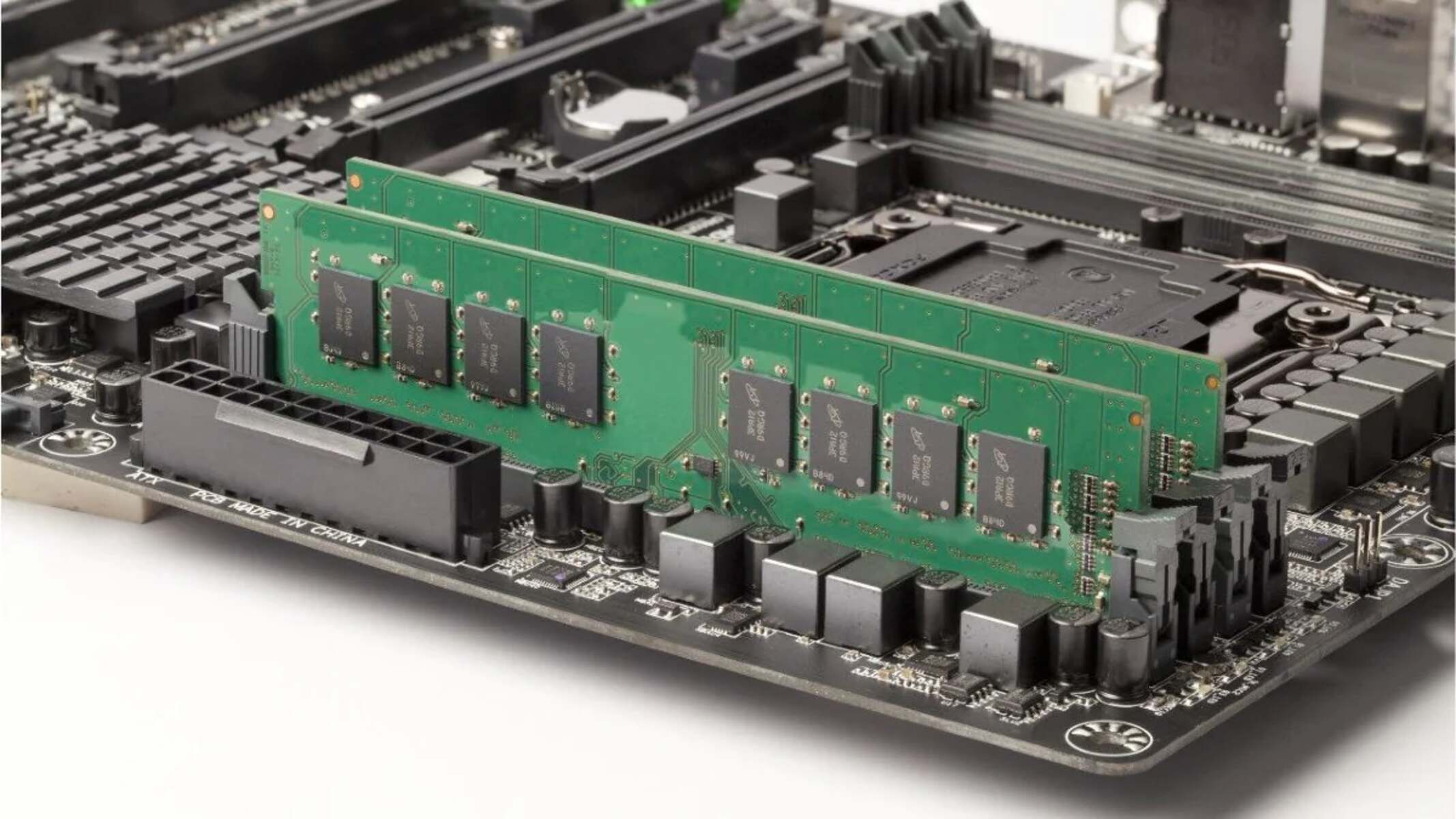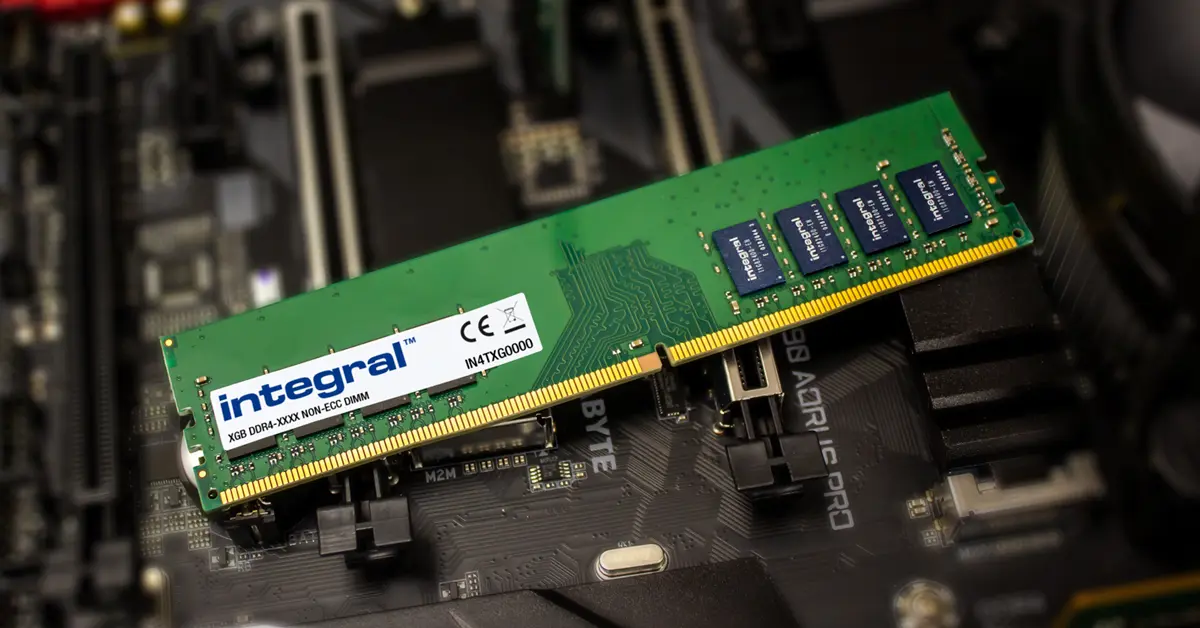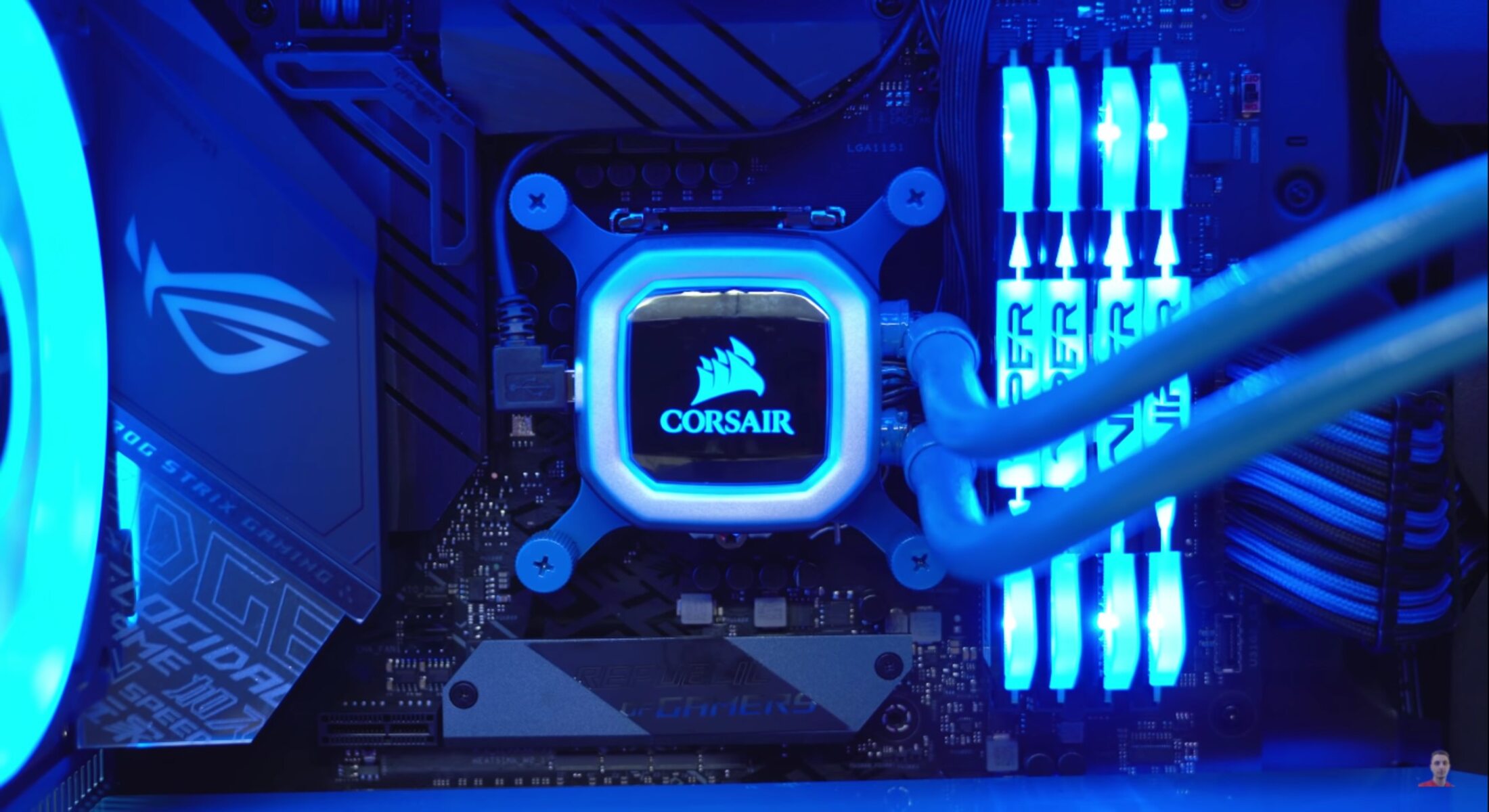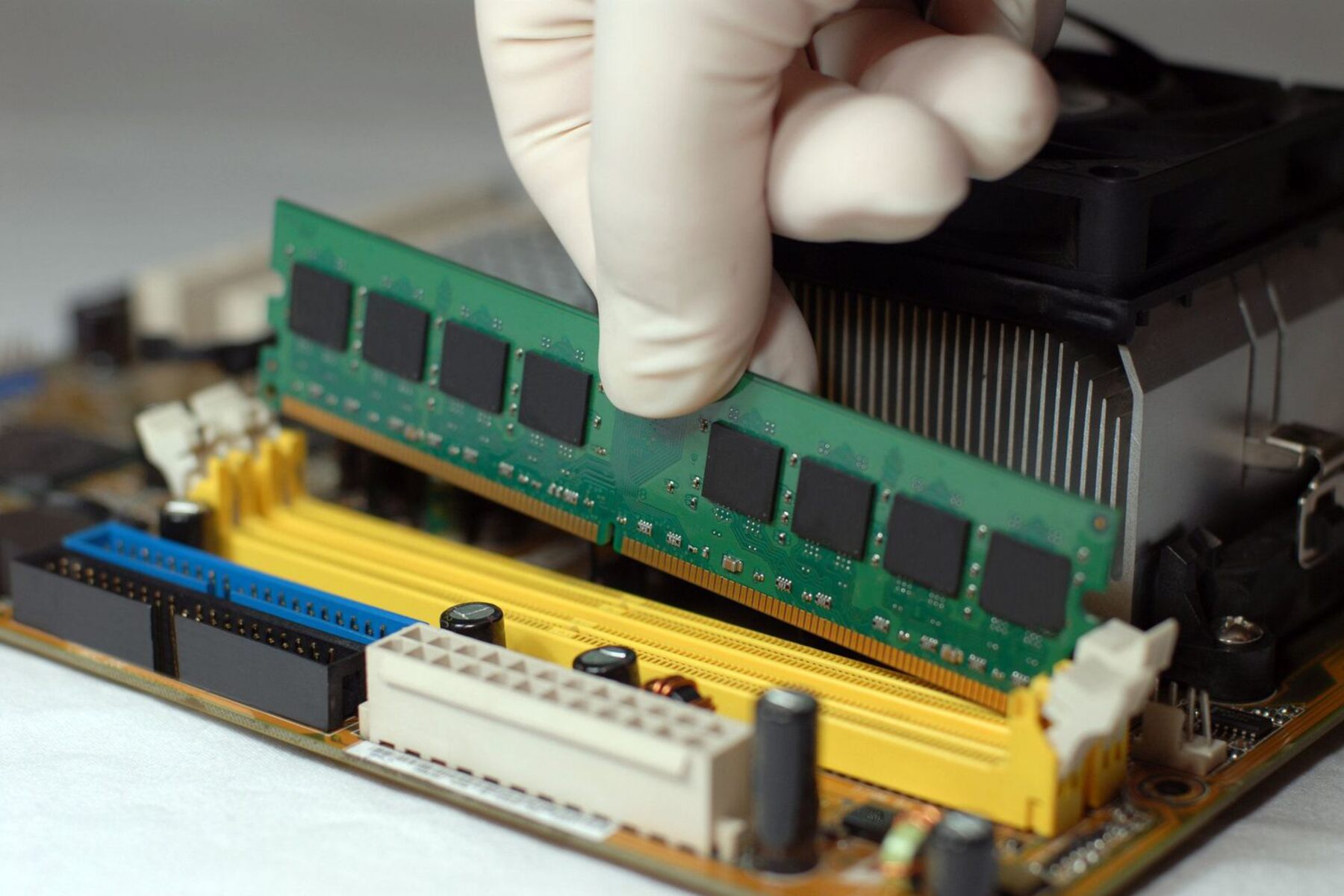Introduction
When it comes to computer memory, RAM (Random Access Memory) plays a vital role in ensuring optimal performance and multitasking capabilities. RAM is the temporary storage area where data and instructions are stored for quick access by the CPU (Central Processing Unit). It acts as a bridge between the CPU and hard drive, providing faster data retrieval and processing speeds.
RAM technology has evolved over the years, leading to the development of various types of RAM. Each type offers different capacities, speeds, and power consumption levels, catering to a wide range of computing needs. Understanding the different types of RAM can help you make informed decisions when upgrading or building a computer system.
In this article, we will explore several types of RAM, including Synchronous Dynamic RAM (SDRAM), Double Data Rate Synchronous Dynamic RAM (DDR SDRAM), DDR2 SDRAM, DDR3 SDRAM, DDR4 SDRAM, Graphics Double Data Rate (GDDR) SDRAM, Low Power Double Data Rate (LPDDR) SDRAM, Extended Data Output (EDO) RAM, and Video RAM (VRAM).
Each type of RAM offers unique features and benefits that cater to specific computing requirements. Whether you’re a casual computer user, a hardcore gamer, or a professional designer, understanding the different types of RAM can help you choose the right one to optimize your system’s performance and meet your specific needs.
Now, let’s dive into the world of RAM and explore the specifics of each type, so you can make an informed decision when it comes to upgrading or building your computer system.
Synchronous Dynamic RAM (SDRAM)
Synchronous Dynamic RAM (SDRAM) is one of the earliest types of RAM and is commonly used in older computer systems. It is characterized by its synchronous operation, which means it synchronizes its data transfers with the system clock signal, resulting in improved overall performance.
SDRAM operates at a bus speed that matches or is a multiple of the system’s front-side bus (FSB) speed, allowing for faster data transfer rates compared to its predecessors. It uses a 168-pin DIMM (Dual Inline Memory Module) form factor and operates at voltages ranging from 3.3V to 5V.
One of the key advantages of SDRAM is its ability to transfer data on both the rising and falling edges of the clock signal, effectively doubling the data transfer rate. This is known as Double Data Rate (DDR) technology, which we’ll explore in more detail in the next section.
SDRAM comes in different frequencies, such as 66MHz, 100MHz, and 133MHz, with higher frequencies offering faster data transfer rates. It also has various capacities, ranging from 16MB to 1GB, allowing flexibility in choosing the right amount of memory for your computing needs.
However, SDRAM has limitations when it comes to power consumption. It requires relatively high power levels compared to newer RAM types, resulting in higher heat generation and power consumption. Additionally, SDRAM has lower bandwidth compared to subsequent DDR versions, making it less suitable for demanding applications, such as gaming or video editing.
In summary, Synchronous Dynamic RAM (SDRAM) is an older type of RAM that offered significant improvements over its predecessors. It provided faster data transfer rates through its synchronous operation and support for Double Data Rate (DDR) technology. While SDRAM is widely used in older computer systems, its power consumption and lower bandwidth make it less suitable for modern, high-performance computing tasks.
Double Data Rate Synchronous Dynamic RAM (DDR SDRAM)
Double Data Rate Synchronous Dynamic RAM (DDR SDRAM) is an improved version of SDRAM that offers faster data transfer rates and improved overall performance. It utilizes Double Data Rate (DDR) technology, allowing it to transfer data on both the rising and falling edges of the clock signal, effectively doubling the data transfer rate compared to SDRAM.
DDR SDRAM introduced a new form factor known as the DIMM (Dual Inline Memory Module), which improved memory installation and compatibility. It features a 184-pin connector and operates at voltages ranging from 2.5V to 2.6V.
There are several iterations of DDR SDRAM, including DDR, DDR2, DDR3, and DDR4. Each iteration offers increased performance and improved efficiency compared to its predecessor.
DDR SDRAM comes in various frequencies, such as DDR-200, DDR-266, and DDR-400, denoting the maximum data transfer rate in megabits per second (Mbps). Higher frequencies offer faster data transfer rates, allowing for smoother multitasking and improved overall system performance.
One of the key advantages of DDR SDRAM is its backward compatibility, allowing it to be used in systems designed for its previous iterations. For example, DDR SDRAM can be used in a motherboard that supports DDR2 or DDR3 RAM, operating at the maximum supported frequency of the motherboard.
DDR SDRAM is widely used in a variety of computer systems, from personal desktops to enterprise servers. Its faster data transfer rates, larger capacities (up to 16GB per module), and backward compatibility make it an excellent choice for both casual and professional users.
However, it’s important to note that DDR SDRAM is not compatible with other types of RAM, such as SDRAM or RDRAM (Rambus DRAM). Make sure to check your motherboard’s specifications to ensure compatibility before purchasing DDR SDRAM modules.
In summary, Double Data Rate Synchronous Dynamic RAM (DDR SDRAM) revolutionized computer memory by offering faster data transfer rates and improved compatibility. Its various iterations, such as DDR2, DDR3, and DDR4, continued to push the boundaries of performance and efficiency. DDR SDRAM remains a popular choice for users seeking faster and more reliable memory solutions.
DDR2 SDRAM
DDR2 SDRAM is the second generation of Double Data Rate (DDR) memory technology and is an advancement over DDR SDRAM. It offers improved performance, higher data transfer rates, and increased memory capacity compared to its predecessor.
DDR2 SDRAM introduced a number of enhancements to the memory technology. It operates at higher clock speeds and uses a higher bus speed, allowing for faster data transfer rates and improved system performance. It also introduced a new form factor with a 240-pin connector, ensuring better compatibility and stability.
One notable feature of DDR2 SDRAM is its improved prefetch buffer, which allows for more efficient data retrieval. It is capable of fetching 4 data words per clock cycle, which is twice the rate of DDR SDRAM.
DDR2 modules are available in various frequencies, such as DDR2-400, DDR2-533, DDR2-667, and DDR2-800, denoting the maximum data transfer rate in megabits per second (Mbps). Higher frequencies offer faster data transfer rates and better overall system performance.
Another significant improvement in DDR2 SDRAM is the reduction in power consumption. By using lower operating voltages ranging from 1.8V to 2.1V, DDR2 modules consume less power compared to DDR SDRAM. This contributes to lower heat generation and increased energy efficiency in computer systems.
DDR2 SDRAM is backward compatible, meaning it can be used in motherboards designed for DDR SDRAM. However, it will operate at the maximum supported frequency of the motherboard. This provides flexibility for upgrading older systems without the need for a complete overhaul.
DDR2 SDRAM is widely used in a range of computer systems, from personal computers to servers. Its improved performance, higher capacity (up to 8GB per module), and lower power consumption make it an attractive option for users seeking enhanced memory capabilities.
However, it’s worth noting that DDR2 SDRAM is not compatible with other types of RAM, such as DDR3 or DDR4. Before purchasing DDR2 SDRAM modules, ensure that your system’s motherboard supports DDR2 technology.
In summary, DDR2 SDRAM represents a significant advancement in memory technology, offering improved performance, higher data transfer rates, and increased memory capacity. Its compatibility with DDR SDRAM and lower power consumption make it a popular choice for upgrading older systems to enhance overall system performance.
DDR3 SDRAM
DDR3 SDRAM is the third generation of Double Data Rate (DDR) memory technology and offers further advancements in speed, performance, and energy efficiency compared to its predecessors. It builds upon the successes and improvements of DDR2 SDRAM and is widely used in modern computer systems.
One of the key enhancements of DDR3 SDRAM is the increase in data transfer rates. It operates at higher clock speeds and utilizes a higher bus speed, allowing for faster data transmission and improved overall system performance. DDR3 modules are available in various frequencies, such as DDR3-800, DDR3-1066, DDR3-1333, DDR3-1600, and beyond, denoting the maximum data transfer rate in megabits per second (Mbps).
DDR3 SDRAM also introduced higher memory densities, allowing for larger capacities per module. This means that DDR3 modules can have higher storage capacities, ranging from 1GB to 16GB per module, making them suitable for demanding applications such as gaming, video editing, and data-intensive tasks.
Energy efficiency is another significant improvement in DDR3 SDRAM. It operates at lower voltages compared to its predecessors, ranging from 1.35V to 1.5V. This reduction in voltage enables DDR3 memory modules to consume less power, generate less heat, and contribute to overall system energy efficiency.
DDR3 SDRAM is designed to be backward compatible, meaning it can be used in motherboards that support DDR2 or DDR3. However, it will operate at the maximum supported frequency by the motherboard. This flexibility allows users to upgrade their systems without the need for a complete overhaul.
Another feature of DDR3 SDRAM is improved signal quality, thanks to on-die termination (ODT) technology. This technology helps to reduce signal reflections and improve the integrity of data transmission, resulting in improved system stability and robustness.
DDR3 SDRAM is widely used in a range of computing applications, including personal computers, laptops, servers, and workstations. Its faster data transfer rates, higher capacities, and improved energy efficiency make it an attractive choice for users who require high-performance memory in their systems.
It is worth noting that DDR3 SDRAM is not compatible with other types of RAM, such as DDR2 or DDR4. Before purchasing DDR3 SDRAM modules, ensure that your motherboard supports DDR3 technology for seamless compatibility.
In summary, DDR3 SDRAM represents a significant step forward in memory technology, offering faster data transfer rates, higher memory capacities, and improved energy efficiency. Its backward compatibility, increased signal quality, and wide range of applications make it a popular choice for users seeking enhanced performance and reliability in their computer systems.
DDR4 SDRAM
DDR4 SDRAM is the fourth generation of Double Data Rate (DDR) memory technology and represents a significant advancement in speed, performance, and efficiency compared to its predecessors. It builds upon the successes of DDR3 SDRAM and offers several key improvements that enhance overall system performance.
One of the most significant enhancements of DDR4 SDRAM is the increase in data transfer rates. It operates at higher clock speeds and utilizes a higher bus speed, resulting in faster and more efficient data transmission. DDR4 modules are available in various frequencies, such as DDR4-2133, DDR4-2400, DDR4-2666, DDR4-3200, and even higher, denoting the maximum data transfer rate in megabits per second (Mbps).
DDR4 SDRAM also introduced higher memory densities, allowing for larger capacities per module. This means that DDR4 modules can have even higher storage capacities, ranging from 4GB to 128GB per module, providing ample space for resource-intensive applications such as virtualization, high-resolution gaming, and content creation.
DDR4 SDRAM operates at lower voltages compared to DDR3, ranging from 1.2V to 1.35V. This reduction in voltage not only contributes to energy efficiency but also helps reduce heat generation, improving overall system stability and reliability. Lower power consumption is an important advantage, particularly in mobile devices where battery life is crucial.
DDR4 SDRAM also incorporates additional features such as higher-speed data transfers, improved signal integrity, and enhanced error detection and correction capabilities. These features contribute to a more reliable and efficient memory system, decreasing the chances of data corruption or loss and improving overall system performance.
DDR4 SDRAM modules are not backward compatible with previous DDR memory technologies, such as DDR3 or DDR2. Therefore, it is necessary to verify that your motherboard supports DDR4 technology before upgrading your system to DDR4 modules.
DDR4 SDRAM is now widely adopted in a range of computing applications, including high-performance desktops, servers, workstations, and even some high-end laptops. Its faster data transfer rates, higher capacities, improved energy efficiency, and advanced features make it the go-to choice for users who demand cutting-edge performance and reliability.
In summary, DDR4 SDRAM represents a significant leap in memory technology, offering faster data transfer rates, higher memory capacities, improved energy efficiency, and advanced features. Its widespread adoption in various computing applications demonstrates its value in meeting the demands of today’s high-performance systems.
GDDR (Graphics Double Data Rate) SDRAM
GDDR (Graphics Double Data Rate) SDRAM is a specialized type of memory specifically designed for graphics processing units (GPUs) in high-performance graphics cards. It is optimized to handle the demanding requirements of rendering complex graphics, 3D modeling, and high-resolution video playback.
One of the key features of GDDR SDRAM is its faster memory bandwidth, which is crucial for graphics-intensive applications. GDDR achieves this by utilizing double data rate (DDR) technology, similar to that of DDR SDRAM but with modifications tailored for graphics processing. This allows for faster data transfer rates and improved overall performance compared to standard system memory.
GDDR memory comes in different iterations, such as GDDR3, GDDR4, GDDR5, GDDR5X, GDDR6, and the latest GDDR6X. Each iteration offers advancements in data transfer rates, memory densities, and power efficiency.
GDDR memory operates at higher frequencies and has wider memory bus interfaces than standard system memory. This allows for quicker access to large amounts of graphical data, minimizing bottlenecks and providing smooth and detailed visual experiences. It also supports advanced features like fast memory swapping and concurrent read/write operations, essential for real-time rendering and high-resolution video processing.
Another significant aspect of GDDR SDRAM is its higher memory capacities. Graphics cards with GDDR memory can have capacities ranging from 1GB to 24GB or more, depending on the card’s specifications. This allows for the storage of massive textures, complex models, and other graphics-related data, crucial for modern gaming, content creation, and professional visual applications.
GDDR SDRAM is commonly used in dedicated graphics cards found in gaming computers, workstations, and high-end laptops. These graphics cards provide the performance needed to handle demanding games, virtual reality experiences, and resource-intensive design and rendering tasks.
It is important to note that GDDR memory is not interchangeable with standard DDR memory used in computer systems. GDDR is specifically designed for graphics cards and is not compatible with motherboards or system memory slots. When upgrading or purchasing a graphics card, ensure compatibility with your system’s motherboard and consider the specific GDDR iteration to meet your performance needs.
In summary, GDDR (Graphics Double Data Rate) SDRAM is specialized memory designed for high-performance graphics processing in graphics cards. With faster memory bandwidth, higher capacities, and advanced features, GDDR SDRAM enables smooth and detailed graphics rendering, making it essential for gamers, content creators, and professionals in the visual arts.
LPDDR (Low Power Double Data Rate) SDRAM
LPDDR (Low Power Double Data Rate) SDRAM is a type of memory specifically designed for mobile devices that require high-performance memory with low power consumption. It is commonly used in smartphones, tablets, and other portable devices where energy efficiency is a critical consideration.
One of the key features of LPDDR SDRAM is its low power consumption. It operates at lower voltage levels compared to other memory types, ranging from 1.2V to 1.8V, resulting in reduced power consumption and prolonged battery life. This makes LPDDR SDRAM ideal for mobile devices that rely on limited power sources.
LPDDR memory utilizes double data rate (DDR) technology, similar to other DDR memory types, but with additional power-saving features. It offers improved performance by transferring data on both the rising and falling edges of the clock signal, effectively doubling the data transfer rate compared to previous memory technologies.
LPDDR memory comes in different iterations, including LPDDR2, LPDDR3, and the latest LPDDR4. Each iteration offers advancements in data transfer rates, memory densities, and power efficiency. LPDDR4, for example, provides higher clock speeds, lower power consumption, and increased memory speeds compared to its predecessors.
Another notable feature of LPDDR SDRAM is its high memory density. LPDDR memory allows for higher-capacity modules, enabling mobile devices to handle large amounts of data and run memory-intensive applications smoothly. This is crucial for tasks such as gaming, video streaming, and multitasking on mobile devices.
LPDDR memory is designed to be efficient in managing power consumption, especially during idle periods. It implements power-saving mechanisms such as self-refresh mode and deep power down mode to reduce power consumption when the memory is not actively in use. This contributes to extended battery life and better overall energy efficiency.
LPDDR SDRAM is widely used in mobile devices due to its combination of high-performance capabilities and low power consumption. It enables seamless multitasking, smooth video playback, and efficient operation of resource-intensive applications, all while optimizing battery usage.
It is important to note that LPDDR memory is not interchangeable with standard DDR memory used in desktop and laptop computers. LPDDR is specifically designed for mobile devices and is not compatible with the memory slots found in typical computer motherboards.
In summary, LPDDR (Low Power Double Data Rate) SDRAM is designed for mobile devices, offering high-performance memory with low power consumption. With its focus on energy efficiency, high memory density, and superior data transfer rates, LPDDR memory plays a vital role in enhancing the performance and power efficiency of smartphones, tablets, and other portable devices.
EDO (Extended Data Output) RAM
EDO (Extended Data Output) RAM was a type of memory technology that was popular in the 1990s. It was an improvement over the previous FPM (Fast Page Mode) RAM and provided faster data access and improved system performance. Although it is now obsolete and rarely used today, it played a significant role in the advancement of computer memory technology.
EDO RAM introduced a new feature called “page mode” that allowed for quicker data access. With page mode, consecutive memory access did not require the repeated row address setup, resulting in reduced access time and improved efficiency. This made EDO RAM faster than its predecessor, FPM RAM.
Another benefit of EDO RAM was its ability to hold data in the memory array while the CPU processed it. This allowed for back-to-back memory access without having to wait for the CPU to complete its tasks. As a result, it provided a slight performance boost for certain operations.
EDO RAM was available in various speeds, denoted by the nanoseconds (ns) it took for the memory to access data. Common speeds included 60ns, 70ns, and 80ns. However, it is important to note that the speeds of EDO RAM were slower compared to more modern memory technologies.
Despite its advantages, EDO RAM had certain limitations. It had limited support for multitasking due to its single-port design, where only one read or write operation could be performed at a time. Additionally, EDO RAM had a lower memory density compared to newer memory technologies, limiting the maximum amount of RAM that could be installed in a system.
Today, EDO RAM is considered obsolete and has been replaced by more advanced memory types like DDR, DDR2, DDR3, DDR4, and others. These newer technologies offer higher data transfer rates, larger memory capacities, and improved power efficiency, making them more suitable for modern computing needs.
In summary, EDO (Extended Data Output) RAM was a memory technology that offered faster access times and improved performance compared to FPM RAM. It introduced page mode, provided slight performance benefits, and held data in the memory array while the CPU processed it. Although it is now outdated, EDO RAM played a significant role in the evolution of computer memory technology.
VRAM (Video RAM)
VRAM (Video RAM) is a specialized type of memory that is dedicated to graphics processing in computers and gaming consoles. It is a crucial component in graphics cards as it provides the memory capacity and bandwidth necessary for rendering complex graphics, high-resolution textures, and smooth video playback.
One of the key features of VRAM is its high bandwidth capabilities. It possesses a wide memory bus that allows for fast data transfer rates between the graphics processor and the display. The high bandwidth is essential for handling the vast amount of visual data required for real-time rendering and video processing applications.
VRAM utilizes a dual-ported structure, allowing simultaneous access by both the graphics processor and the display controller. This enables quick retrieval and modification of graphical data, ensuring smooth and seamless performance without causing delays or artifacts.
The capacity of VRAM varies depending on the specific graphics card, ranging from a few hundred megabytes to several gigabytes. High-end gaming and professional graphics cards often come with larger VRAM capacities to accommodate resource-intensive applications and provide superior visual quality.
VRAM is optimized for the demands of gaming, 3D modeling, video editing, and other graphics-intensive tasks. It stores and rapidly retrieves graphical data that is frequently accessed during rendering or texture mapping, ensuring fast and fluid gameplay experiences. Additionally, VRAM allocates specific memory regions for different tasks, such as frame buffers and texture caches, to enhance graphics rendering efficiency.
One crucial factor to consider with VRAM is its memory type. Different generations of VRAM, such as GDDR (Graphics Double Data Rate) and HBM (High Bandwidth Memory), offer varying levels of performance, bandwidth, and power consumption. Newer VRAM technologies provide higher data transfer rates and increased memory densities, resulting in improved visual quality and smoother frame rates.
It’s important to note that VRAM is separate from system memory (RAM) in a computer. While system memory is used for general computing tasks, VRAM is dedicated solely to graphics processing and is integrated into the graphics card itself.
In summary, VRAM (Video RAM) is a specialized type of memory designed for graphics processing in computers and gaming consoles. Its high bandwidth capabilities, dual-ported structure, and ample memory capacity enable it to meet the demanding requirements of rendering realistic graphics, high-resolution textures, and seamless video playback.
Conclusion
In conclusion, understanding the different types of RAM is essential for optimizing system performance and meeting specific computing needs. From the early Synchronous Dynamic RAM (SDRAM) to the latest DDR4 SDRAM, each type has brought significant improvements in data transfer rates, memory capacities, and power efficiency.
SDRAM revolutionized memory technology with its synchronous operation and support for Double Data Rate (DDR) technology. DDR SDRAM further enhanced performance with faster data transfer rates and backward compatibility, while DDR2 SDRAM introduced improvements in prefetch buffer and power consumption.
The arrival of DDR3 SDRAM brought even higher frequencies, increased memory densities, and improved energy efficiency. With the advent of DDR4 SDRAM, faster data transfer rates, higher capacities, and advanced features pushed the boundaries of performance and efficiency.
Graphics Double Data Rate (GDDR) SDRAM catered specifically to high-performance graphics processing, providing faster memory bandwidth and larger capacities for enhanced gaming and visual experiences. Low Power Double Data Rate (LPDDR) SDRAM offered optimal performance with low power consumption, making it ideal for mobile devices.
Though no longer widely used, Extended Data Output (EDO) RAM played a significant role in improving memory access times in the 1990s. Lastly, Video RAM (VRAM) became the go-to memory for graphics cards, ensuring fast data retrieval and rendering of complex graphical data.
As technology advances, it is important to stay updated with the latest trends and developments in RAM technologies. The choice of RAM depends on specific requirements, such as system compatibility, performance demands, and power efficiency. Evaluating these factors will help users make informed decisions when selecting RAM for their computer systems.
Whether you’re a gamer, a professional user, or a casual computer user, having the right type of RAM can significantly impact your overall computing experience. By understanding the various types of RAM and their features, you can choose the most suitable option to optimize your system’s performance and meet your specific needs.
So, dive into the world of RAM, consider your computing requirements, and make the best choice to elevate your computer’s capabilities.







